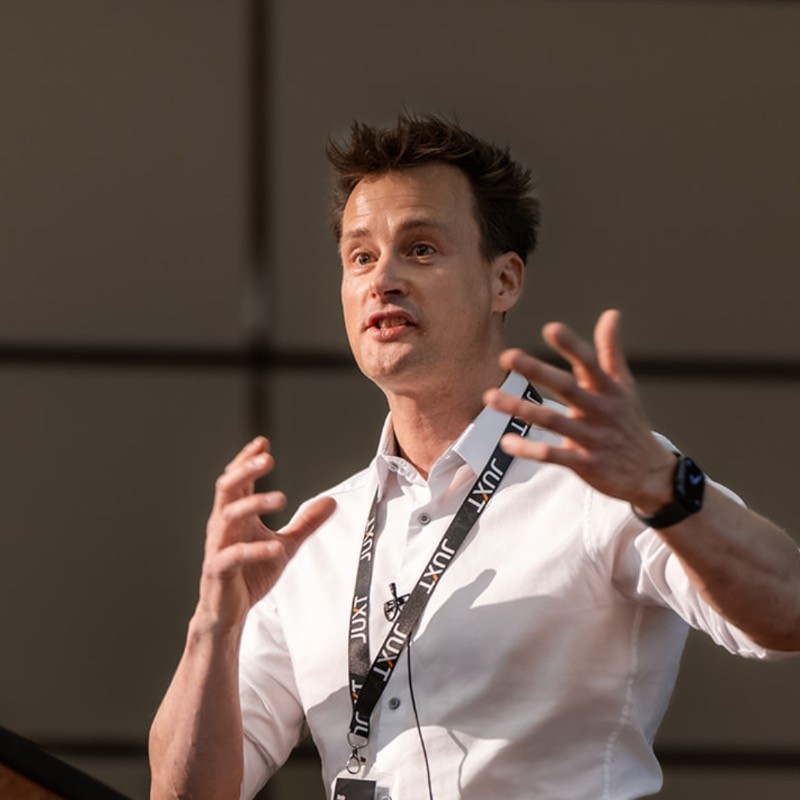Why We Bootstrap

Venture capital isn’t the necessity it once was for tech startups. Bootstrapped companies are competing with—and outflanking—heavily funded goliaths by finding a niche and applying focus.
The bootstrapping superpower
The combination of small teams and an intense bootstrapping ethos can be a superpower.
• Venture capital offers a tonne of competitive advantage and can grow a company fast, but it puts you on a treadmill focused on revenue and fast growth targets. Raising rounds is intoxicating and it's easy to get stuck in the fundraising loop.
• Bootstrapped founders get to choose their company's focus. For example, David Heinemeier Hansson bootstrapped Basecamp by focusing on slow, consistent, profitable growth.
At Flagsmith, bootstrapping lets us build efficiently and focus on the customer. We hit $1.5M ARR earlier this year with a super lean team, and we’re genuinely excited about the next chapters. Here are four reasons we continue to bootstrap.
1. Customer focus
The VC track puts focus on the company’s next raise. Bootstrapping lets us focus on customers.
There are pros and cons to both tracks. With external capital growth can rocket, but the path is laid out for you. The growth mindset can become very internally focused as you need to look at:
• Hiring
• Increasing LTVs
• Getting more customers fast
• Hitting board-driven revenue milestones
We’re profitable and stable and don't have an absolute mandate to hit an external revenue goal. All of the goals we set are our own.
We’ve had tough budget constraints, but since we’ve stayed profitable we haven’t had to play pricing games by upselling customers or hiking prices. We’ve created a pricing model and customer support ethos that fits with our business goals.
2. We haven't had financial pressure to grow fast
Fewer financial pressures from infrastructure costs etc.
Back in the day venture capital was applied to technology businesses because they were enormously expensive to start—and run—so you couldn't do it on your own.
You had to buy pricey hardware. Software tools were expensive and you needed enterprise licences. You probably also needed Oracle databases, which weren’t cheap. To start a technology company you needed capital.
That's not the case anymore. You can start a sustainable software business for relatively small amounts. A lot of software tools have trials, startup versions or open source options.
The guts of the Flagsmith platform were essentially free when we were running the agency, and we scaled it to billions of monthly requests on our own budget. That would have cost a fortune 20 years ago.
Building out of an agency
We started building Flagsmith alongside running an agency. At first, we were able to grow organically in line with open source growth. We didn’t have financial pressures to build quickly, so we didn’t need capital.
As we grew, we realised VC money comes with some competitive advantage, but it also comes with a tonne of obligations like meetings, targets, reporting, and externally set timelines. That doesn’t fit the way we want to build. Since we’ve hit profitability and sustainability, we’ve chosen to continue sidestepping the VC path in favour of growing efficiently.
3. Bootstrapping can be sustainable
Bootstrapped companies often get asked about sustainability. Really, though, bootstrapped companies are hardened and have had to make their way from the beginning; they have stability baked in at the start.
Venture-backed companies’ sustainability is commonly measured by runway (the amount of time they have left before they run out of cash.) Typically this is measured in months!
It's a ticking clock that can lead to running out of money, selling, or having to raise again. This can be fragile. If you look at a bootstrapped company that’s hit profitability, there is no runway. The plane is climbing into the air.
Coming back to the hardened mentality, bootstrapping founders of sustainable businesses often appreciate the fact that there are no quick wins. They’ve chosen to grow efficiently and have worked with hard financial constraints. They've had to avoid messing up budgeting choices by growing too fast and creating cultural/technical drift.
So while there are a huge number of companies that do well with VC money, ask any VC and you will hear that most of their portfolio will fail. There are a lot of companies that raise $5 million and get published on Crunchbase only to disappear overnight because they aren’t sustainable. (e.g. Just 4% of SaaS companies reach $1M ARR.)
4. Bootstrapping fits our ethos (and excitement around figuring out what's next)
Company ethos
We believe enterprise software is not a winner-takes-all game. With the current software landscape, there's room for multiple players in most software markets.
External capital can help you grow faster and take more market share. But you can also do really well in a market without that competitive advantage if you find your niche.
We’ve chosen to build a sustainable open source feature flag software with commercial enterprise licenses and on-premises deployment options. Our code is in the open and tested by developers around the globe. Our choices to open source and bootstrap mirror one another.
Personal ethos
I don't want Flagsmith’s focus to be on money. Part of the joy of bootstrapping Flagsmith is that we aren’t bound to hit externally set revenue goals within a timeframe. We have the freedom to choose what happens next.
Flagsmith makes money. It’s sustainable. It has fantastic customers and a thriving open source community. There’s no rigidity or pre-ordained milestones for the next phase of our growth, which lets us be creative and enjoy running the business.
There’s a lot of joy in knowing that we don’t have the next five years set in stone, and we’re not cycling down a path that's getting narrower and narrower while our ability to fail is going up and up.
More Like This

.webp)


























































.png)
.png)

.png)

.png)



.png)






















.png)












